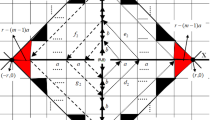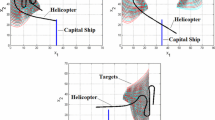Abstract
The optimal sequential procedure for performing a track search of a region is by the method of successive halving. This method minimizes the minimum deviation from the ideality of sequential division of a region into equally sized areas. For most track searches no cost is incurred in going from an exit point on the perimeter of a region to the next entry point. In the special circumstance where this cost becomes significant, a sequential track search by the golden weave becomes attractive.
Similar content being viewed by others
References
Shannon, C. E., and Weaver, W., 1964, The mathematical theory of communication: University of Illinois Press, Urbana.
Sharp, W. E., 1978, Golden weaves: Math. Gaz., v. 62, p. 42–44.
Steinhaus, H., 1969, Mathematical snapshots (3rd ed.): Oxford University Press, New York.
Wilde, D. J., 1964, Optimum seeking methods: Prentice-Hall, Englewood Cliffs, New Jersey.
Author information
Authors and Affiliations
Rights and permissions
About this article
Cite this article
Sharp, W.E. Target search by golden weave. Mathematical Geology 13, 391–398 (1981). https://doi.org/10.1007/BF01079643
Received:
Issue Date:
DOI: https://doi.org/10.1007/BF01079643




